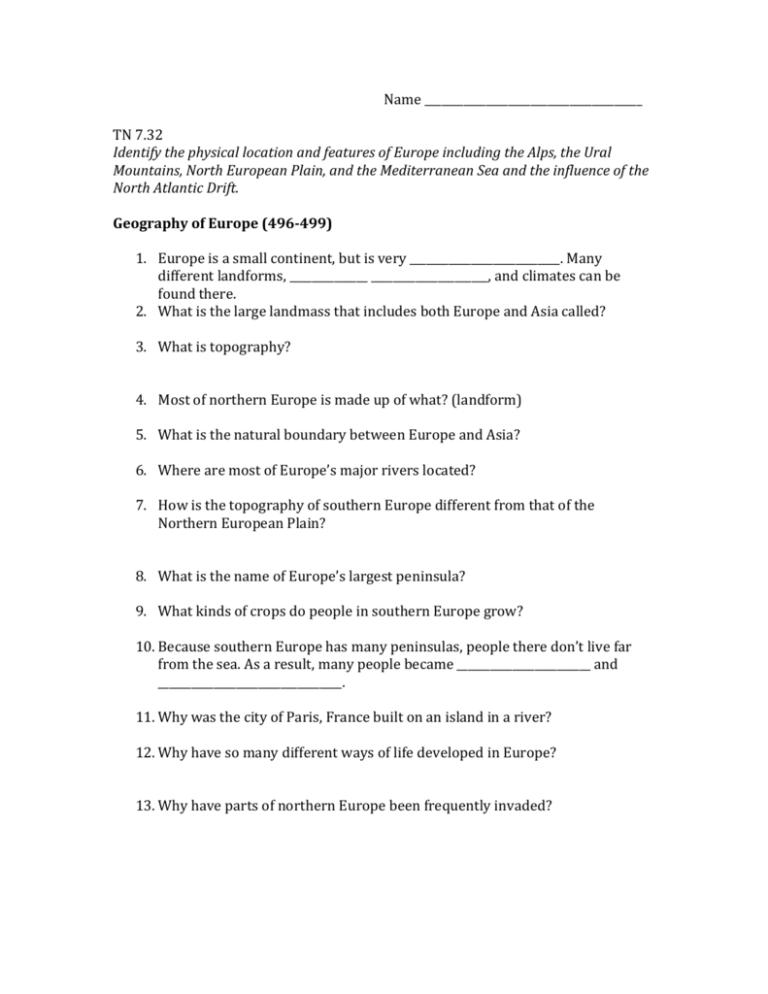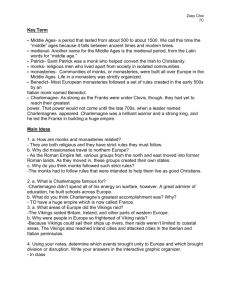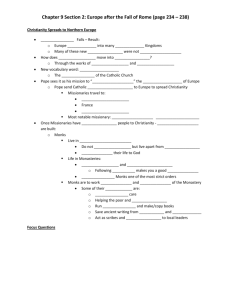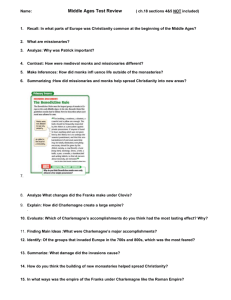Name TN 7.32 Identify the physical location and features of Europe
advertisement

Name _______________________________________ TN 7.32 Identify the physical location and features of Europe including the Alps, the Ural Mountains, North European Plain, and the Mediterranean Sea and the influence of the North Atlantic Drift. Geography of Europe (496-499) 1. Europe is a small continent, but is very ___________________________. Many different landforms, ______________ _____________________, and climates can be found there. 2. What is the large landmass that includes both Europe and Asia called? 3. What is topography? 4. Most of northern Europe is made up of what? (landform) 5. What is the natural boundary between Europe and Asia? 6. Where are most of Europe’s major rivers located? 7. How is the topography of southern Europe different from that of the Northern European Plain? 8. What is the name of Europe’s largest peninsula? 9. What kinds of crops do people in southern Europe grow? 10. Because southern Europe has many peninsulas, people there don’t live far from the sea. As a result, many people became ________________________ and _________________________________. 11. Why was the city of Paris, France built on an island in a river? 12. Why have so many different ways of life developed in Europe? 13. Why have parts of northern Europe been frequently invaded? Europe After the Fall of Rome (500-504) TN 7.37 Examine the spread of Christianity north of the Alps and the roles played by the early church and by monasteries in its diffusion after the fall of the western half of the Roman Empire. 1. Europe was a dangerous place after Rome fell. Without the Roman government, Europe had no ______________________ _________________________ to keep order. As a result, _______________________ and ________________________ became common. 2. What led to Europe being divided into many small kingdoms by the early 500s? 3. How long did the Middle Ages last? Why was it called the “middle” ages? What was another name for the time period? 4. What was responsible for the spread of Christianity to northern Europe, areas that weren’t part of the former Roman Empire? 5. Who was the most powerful force in spreading Christianity into northern Europe? What is a missionary? 6. Why was Saint Patrick important? 7. Who were monks? How were medieval monks and missionaries different? 8. What is a monastery? What was life like for monks in a monastery? 9. Who were Benedictine monks? 10. How did monks influence life outside of the monasteries? 11. What was the name of the group that conquered Gaul (France) in the 480s? 12. What changes did the Franks make under Clovis? 13. How did Charlemagne create a large empire? By the time he was finished, what countries did his empire include? 14. What happened on Christmas day in 800? What did this symbolize? 15. What did Charlemagne have built all across Europe? What did this help to shape? 16. What new threats appeared throughout Europe while Charlemagne was building his empire? Who were the most frightening invaders of all? 17. What areas of Europe did the Vikings raid? 18. What did the Vikings do to cause people throughout Europe to live in terror? 19. When did Charlemagne live? 20. Where did Charlemagne live? 21. What did Charlemagne do? 22. Why was Charlemagne important?











